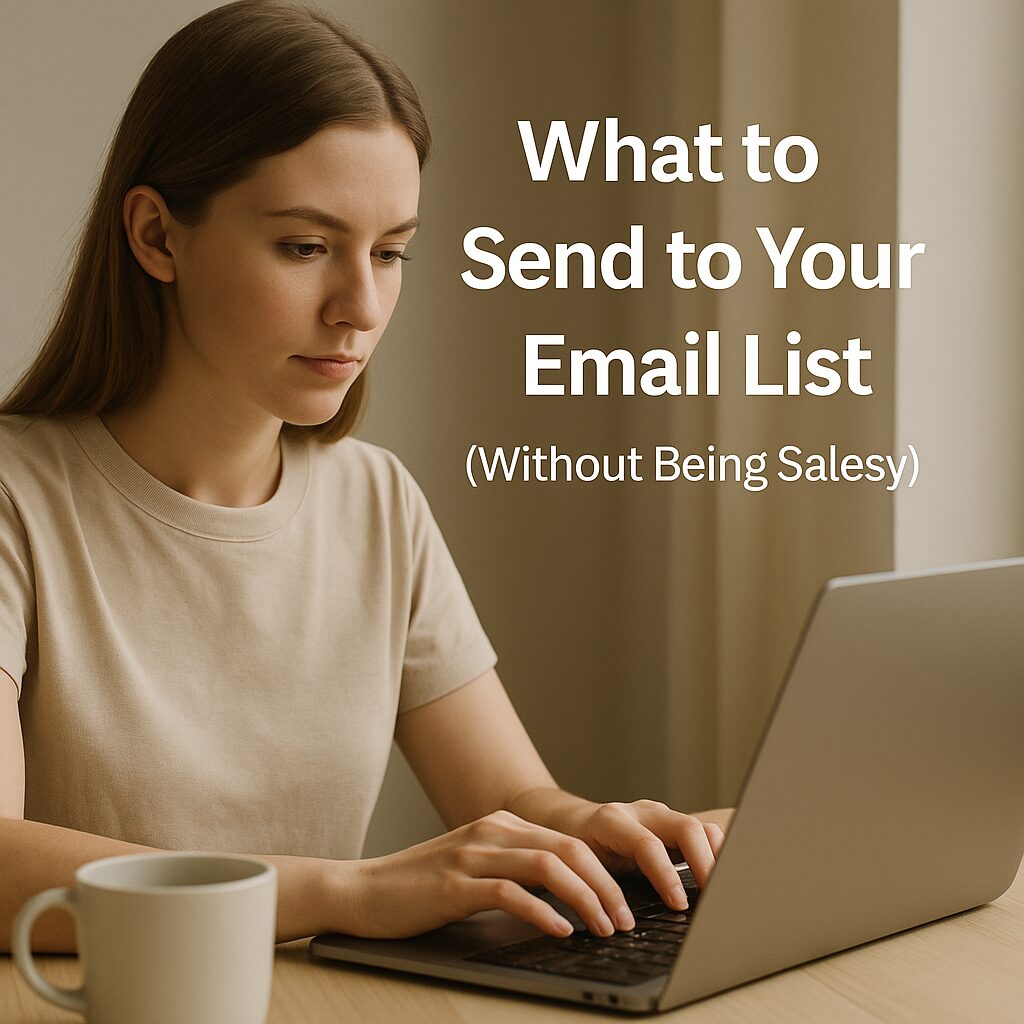So you’ve built your email list. People are subscribing. You’ve got a few evergreen blog posts bringing in opt-ins each week. Now what?
The next step is crucial: What you send determines whether people stay, engage, or unsubscribe.
If all you send is product pitches, your list will shrink. If you never send anything, they’ll forget who you are.
But if you deliver real value — while still moving them toward income-generating actions — your list becomes one of your most powerful business assets.
Let’s break down what to send (and when), even if you’re just getting started.
1. Start with a Trust-Building Welcome Sequence
Your first few emails matter more than any other. It’s your chance to set the tone, build trust, and make subscribers look forward to your next message.
A simple 3-part welcome flow:
- Email 1 – Welcome + freebie delivery
“Thanks for joining. Here’s the resource I promised…”
Link to your opt-in gift and say what’s coming next. - Email 2 – The story behind your blog
Share why you started, what you believe in, and how you want to help.
Include a link to one of your best blog posts. - Email 3 – Quick win + ask a question
Teach something small but useful. Then ask, “What’s your biggest challenge with [topic]?”
Invite replies — it builds connection.
2. Send a Weekly Value Email (Keep It Simple)
You don’t have to send full-blown newsletters. A great weekly email can be as simple as:
- A short tip related to your blog niche
- A personal lesson or story from the past week
- A link to a new (or old but relevant) blog post
- A tool or book you genuinely recommend
Structure:
1 idea → 1 link → 1 action step
This kind of email builds consistency and trust — without feeling like a sales pitch.
3. Use a Soft Sell Format That Converts
Yes, you can (and should) sell via email — but there’s a smarter way.
Instead of hard pitches, try “soft sell” formats like:
- Tutorial email: Show how you use a tool, then link to it with an affiliate code.
- Behind-the-scenes: How you created a product or solved a problem — with a CTA at the end.
- Case study: Share a subscriber win (with permission), then explain how others can replicate it.
People love useful stories.
They also buy when they feel supported, not pushed.
4. Automate Evergreen Emails That Work 24/7
Don’t write every email manually forever. Build a 4–6 email evergreen sequence that every new subscriber gets automatically.
Example sequence:
- Welcome + freebie
- Story + blog post
- Tool tutorial
- Niche tip + mini course or ebook mention
- FAQ about your product
- Limited-time discount (optional)
This runs quietly in the background — building relationships and revenue.
5. Know What to Avoid (That Kills Your List)
Avoid these common email mistakes:
- Sending only promotions
- Writing 1,000-word essays every week
- Skipping weeks, then dumping 3 in a row
- Using overly “salesy” subject lines
Instead, focus on:
Relevance
Simplicity
Helpfulness
Human voice
People open what feels human, not corporate.
Final Thoughts: Serve First, Then Sell
A healthy email list isn’t the biggest — it’s the most engaged.
If you:
- Teach first
- Share what’s genuinely helped you
- Invite replies
- Recommend only what you believe in
You’ll build a list that clicks, trusts, and buys.
Start small. One email a week. One good story. One honest offer.
That’s how email lists become income lists — without ever sounding pushy.
Next Post Preview:
“How to Turn One Blog Post into 5 Automated Income Streams”
